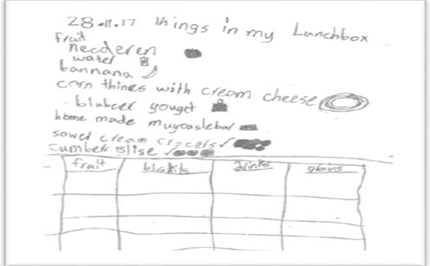Please note: This site contains links to websites not controlled by the Australian Government or ESA. More information here.
reSolve: Authentic Problems: What's For Lunch?
This sequence of four lessons invites students to investigate how many of a chosen food item are eaten at their school in a year. Students identify the mathematical knowledge they need to find how many of the selected items they eat in a year and devise a plan to find the total number, using grouping, partitioning and repeated addition strategies. They share strategies and methods and reach consensus about the most efficient strategies to use. Each lesson is outlined in detail including curriculum links, vocabulary, materials needed, sample answers, discussion points and student resources. This sequence is part of the reSolve: Mathematics by Inquiry special topic 'Authentic Problems'.
Additional details |
|
| Year level(s) | Year 2 |
|---|---|
| Audience | Teacher |
| Purpose | Teaching resource |
| Format | Downloadable resources |
| Teaching strategies and pedagogical approaches | Mathematics investigation |
| Keywords | addition, data collection, counting, mental arithmetic, written calculations |
Curriculum alignment |
|
| Curriculum connections | Numeracy |
| Strand and focus | Number, Statistics, Build understanding, Apply understanding |
| Topics | Addition and subtraction, Multiplication and division, Operating with number, Data representation and interpretation, Place value |
| AC: Mathematics (V9.0) content descriptions |
AC9M2N01
Recognise, represent and order numbers to at least 1000 using physical and virtual materials, numerals and number lines
AC9M2N02
Partition, rearrange, regroup and rename two- and three-digit numbers using standard and non-standard groupings; recognise the role of a zero digit in place value notation
AC9M2N04
Add and subtract one- and two-digit numbers, representing problems using number sentences and solve using part-part-whole reasoning and a variety of calculation strategies
AC9M2N05
Multiply and divide by one-digit numbers using repeated addition, equal grouping, arrays, and partitioning to support a variety of calculation strategies
AC9M2ST01
Acquire data for categorical variables through surveys, observation, experiment and using digital tools; sort data into relevant categories and display data using lists and tables |
| Numeracy progression |
Number and place value (P5)
Additive strategies (P7) Multiplicative strategies (P5) Interpreting and representing data (P3) |
Copyright details |
|
| Organisation | reSolve Maths by Inquiry |
| Copyright | © Australian Government Department of Education, Skills and Employment 2021. Creative Commons BY-NC-SA 4.0. |
Related resources
-
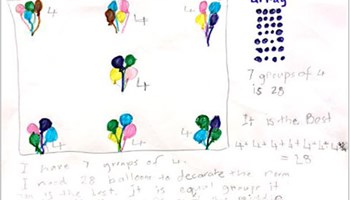
reSolve: Authentic Problems: Bunches of Balloons
A series of inquiry-based lessons about representing multiplication using arrays, within the context of decorating a classroom.
Resource details -
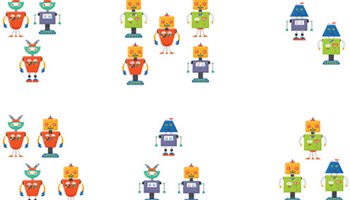
reSolve: Multiplication: Making Robots
A series of inquiry-based lessons about how multiplication can be represented by repeated addition.
Resource details -
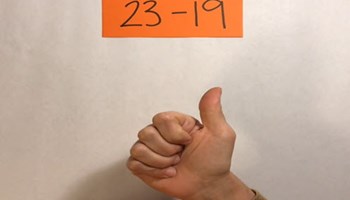
Let’s talk 1
A video for students that explores various strategies for solving a subtraction problem.
Resource details -
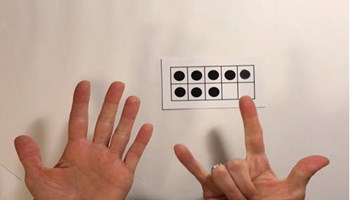
Let's talk 4: part 1
A video for students that explores different strategies for adding three numbers together.
Resource details
